Those who like to listen to music on the road through headphones have probably swore more than once, untangling the tangle of wires. No matter how you wind them up, they will always get tangled, even if stored in a case.
Manufacturers have tried a bunch of options and many shapes of wires, from round in cross section to flat, as well as various types of material, ranging from standard PVC to textile. As a result, the wires are still tangled, some modifications are larger, others are smaller.
Another notable drawback of wired headsets is the short lifespan of the audio plug when used outside the home. With constant use, the wires are sooner or later pinched, or frayed in the place where they come out of the plug. On average, this happens 3-5 months after purchase. It's good if it's a cheap model that you don't mind throwing away. If the wire fails in an expensive product, everything is much worse. As a rule, such breakdowns cannot be repaired.
Fortunately, technology doesn't stand still, and the hardships of wires can be put to rest by purchasing a wireless headset. We will talk about wireless headphones with active noise canceling below.

Content
What are the wireless headphones:
By the used communication technology:
Infrared port
The infrared connection is rather exotic today. The infrared connection has a short range and requires that the paired devices be in sight. Thus, the scope of application is limited to home use, home theater, TV or personal computer.
Radio
Head-mounted stereo telephones, connected via radio, are distinguished by high sound quality and a long range (up to 100 meters). Structurally, they always consist of two parts: the transmitter (to which the output of the audio device is connected) and the receiver (the headphones themselves). Due to this arrangement, the equipment is not suitable for use with portable devices (smartphone or player)
With the development of the Bluetooth radio standard, headphones are losing ground in the market, moving to the professional segment of equipment.
Bluetooth
Today it has become the most common communication standard for wireless gadgets. The technology is also based on signal transmission over a radio channel, at a frequency of 2.4 GHz using proprietary transmission algorithms. The signal is not transmitted in cleartext continuously, but is split into packets and sent using a frequency hopping algorithm that changes more than 1000 times per second. A high level of protection is achieved by changing transmission frequencies. When establishing a connection, two or more devices identify themselves by establishing communication according to the above algorithm. Any other wireless device within range, not knowing the frequency change order, will not be able to intercept the signal.
The bluetooth standard was developed to replace cable connections for small peripherals, keyboards, mice, audio players, and headsets.A special feature of Bluetooth is the compact size of the hardware components and low power consumption. With the development of versions, power consumption and component sizes are reduced even more, which expands the scope of technology and increases the autonomy of devices.
The year of the beginning of the use of Bluetooth is considered to be 1998. Then the first standard with the index 1.0 was released.
Over the years, the technology has been improved and accepted as a standard for use by a large number of market participants and today it is the main one for wireless communication of small-sized devices.
The current versions are 4.0, 4.2 and 5.0.
Wi-Fi
The second most popular wireless standard for digital data transmission.
It has in common with Bluetooth the use of the same frequency when working. In other aspects, there are significant differences. Wi-Fi has a higher data transfer rate (up to 6 Gbps in the latest generation networks). At this speed, the sound delays inherent in bluetooth are reduced to zero.
However, the technology also has its drawbacks in comparison with Bluetooth: high power consumption, and increased power of electromagnetic radiation. With modern technologies, it is extremely difficult to make a miniature gadget with decent autonomy that would work over Wi-Fi.
By design
Overhead
As the name suggests, they are layered over the ears. The speakers are pressed against the ears with special pads - ear pads. The speakers are connected by a bridge in the form of an arc, which is located on the head. There are also options where the speakers are hooked onto the auricles from above using arcs.
Plug-in
The speakers are inserted into the auricle. Foam rubber is used as ear cushions. In some models, the speaker is enclosed in a drop-shaped plastic shell that fits into the ear. When using this type of technique, the user partially hears sounds around him, since the auditory canal is not completely blocked by the audio device.
In-ear
Variety and the next stage in the development of plug-in headphones. Rubber or silicone ear cushions are inserted deep into the ear canal and cut out extraneous sounds. Since the sound source is located deeper in the ear canal than the previous two types, lower power speakers can be used and therefore lower power consumption.
All of the listed types of headphones can also be divided into two categories:
1. Open type. Designed in such a way that air from the back of the speaker can be drawn out. For this, gratings, perforations, or slots can be applied. In such headphones, street noises are partially audible, and low frequencies are usually colored weaker.
2. Closed type. The rear of the speaker is sealed for richer sound. At the same time, extraneous noise is cut off as much as possible.
Speaker type
There are several speaker designs that are used.
Dynamic
The most common option is due to the price / quality ratio. In a closed case, a membrane is installed on a coil with a thin copper wire. There is a magnet on the back of the coil. When played, a voltage is applied to the magnet, an electromagnetic field is created, which causes the membrane to contract, producing sound.
Rebar
The principle of operation is similar to dynamic emitters, but structurally different from them.
Instead of a coil, a U-shaped plate is used, with a membrane installed on top of it. There is a magnet above the membrane. When voltage is applied, the magnet acts on the plate, which causes the membrane to vibrate, which reproduces sound. To improve the sound quality, several such armature speakers can be installed in the headphone housing, which provide rich sound at all frequencies.
Technologies that improve sound quality. Active noise cancellation
Manufacturers have always competed for customer attention and sales. In the competitive struggle, everyone tried to make the playback quality better than that of the competitors. Active noise canceling technology has become one of the methods to improve sound quality.Its essence is to cut off extraneous noises, street noises, or arising directly inside the speakers when playing music.
The first experiments to create such a system were made for military pilots and sailors in the 50s of the last century. As often happens, the technology subsequently went to the masses, and the first mass-produced devices with active noise cancellation were released in 1986.
Structurally, the system works as follows: the headphones are equipped with microphones that pick up the current noise level, and emitters that create waves of the same amplitude, but with antiphase (graphically, this can be represented as a mirror image of the original wave). Overlapping, the waves dampen each other.
A person does not hear the vibrations generated by the speakers in antiphase, but he feels a decrease in extraneous noise.
At the same time, vibrations that are not audible physically, nevertheless, affect the vestibular apparatus, causing headache and nausea in a small number of people.
It depends on the individual characteristics of the organism. If a person is susceptible to motion sickness or does not tolerate the carousel, this indicates a high sensitivity of the vestibular apparatus, therefore, it is likely that active noise cancellation will cause discomfort or headache.
Best Wireless Active Noise Canceling Headphones for 2020
The review includes:
| HUAWEI FreeBuds | RUB 7,999 |
| Xiaomi Redmi AirDots | RUB 1,450 |
| JBL Live 650BTNC | RUB 5,990 |
| Avantree ANC032 | RUB 4,990 |
| Apple AirPods Pro | RUB 19,990 |
| Bose QuietComfort 35 II | RUB 19,990 |
| JBL E65BTNC | RUB 5,190 |
HUAWEI FreeBuds
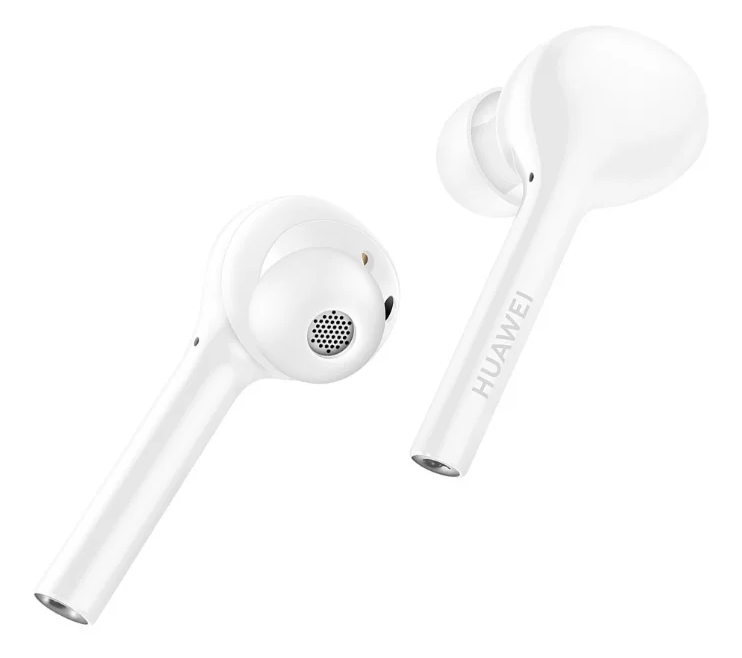
Stereo Bluetooth headset with microphone.
Type: plug-in.
Combined dynamics are used: reinforcing and dynamic. Thus, the most complete transmission of low frequencies and voice during a conversation is achieved.
Frequency response: 20-20000 Hz.
Bluetooth version: 4.2
The built-in battery capacity is 55 mAh, which is enough to listen to music for 3 hours.
The built-in battery case can charge the device three times.
Case charging connector: USB-type C.
Radius of the gadget: 10 m.
The headphone controls are touch sensitive. Supports the ability to automatically play, when you call, you can answer the call with one touch.
The buyer can choose two color options: black or white.
Advantages:
- Replaceable ear pads;
- Water resistant;
- Reliable noise cancellation;
- Comfortable fit in the ear.
Disadvantages:
- Audio transmission delays;
- According to customer reviews, there is a problem with a factory defect, when the left speaker loses volume after a while during playback.
Xiaomi Redmi AirDots
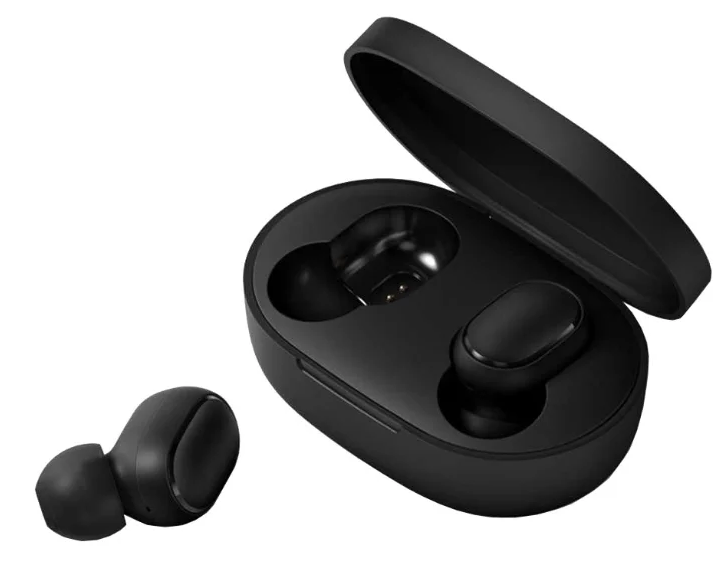
In sixth place is a device from a Chinese manufacturer. In a short period of time, from “just another Chinese handicraft”, Xiaomi has grown to become a world leader in the sale of electronic equipment.
The headphones are made in the popular True Wireless Bluetooth format.
TWS is a form factor with no wires connecting the left and right speakers together. Each of the headphones has a built-in wireless module, but one of them is the main one.
The model is popular with buyers due to its low price. However, at this cost, the headphones show decent autonomy and sound good for their size.
Speaker type used: dynamic.
Reproducible frequencies: 20 - 20,000 Hz.
Radius of action: 10 m.
Working time on one charge is 4 hours.
The gadget has received IP66 water protection, with it you can easily run in the rain or take a shower, it is not recommended to dive.
For the best speed, the manufacturer uses the latest Bluetooth 5.0 standard.
Xiaomi, as it was said, breathes in the back of the flagships, therefore they are trying to push even such monsters as Apple from the market, it is no coincidence that their device is compatible with the Iphone.
Advantages:
- Low price;
- Good autonomy;
- Moisture protection.
Disadvantages:
- Desynchronization of sound on the left and right earphones;
- Thin rubber ear pads.
JBL Live 650BTNC
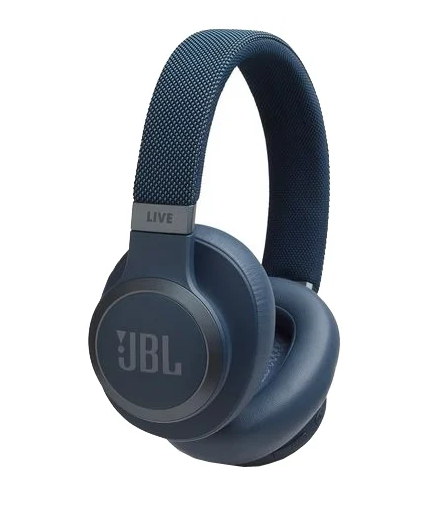
The American brand JBL is well known to audio lovers. Specializing in sound, the company's engineers are constantly improving the quality of their products.A wide range of products, a variety of models and affordable prices have made JBL one of the best-selling headphones brand in Russia.
JBL Live 650BTNC full-size headband stereo headphones with active noise canceling.
The well-proven Bluetooth 4.2 standard has been selected for communication.
The type of emitters is dynamic. Frequency response 16-20000 Hz, speaker impedance 32 Ohm.
The headband is foldable for ease of wearing. Another nice little thing was the ability to work from wires. The kit includes a cable with a 3.5 mm jack, 1.2 m long. If necessary, the headphones can be easily converted into wired ones, which is convenient, for example, when working on a laptop. When connected via a wire, a significant disadvantage of any wireless models disappears - audio delay.
The built-in Li-Ion battery lasts for 30 hours of operation, the time declared by the manufacturer to be fully charged is 2 hours.
The product comes in three colors: black, blue, white.
Advantages:
- Rich sound and excellent noise cancellation;
- Battery life 30 hours;
- Foldable headband;
- Charging cord included.
Disadvantages:
- Tight headband.
Avantree ANC032
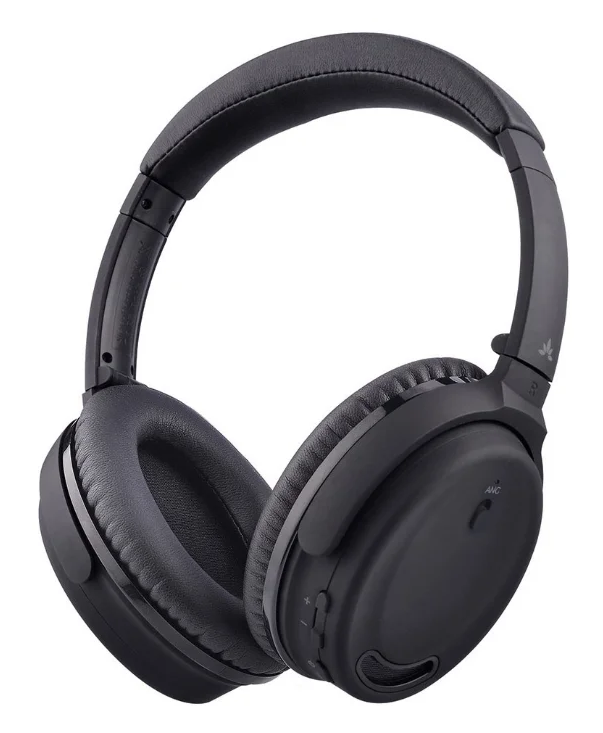
The fourth place in the rating is taken by full-size headphones with a microphone.
Reproduced in the range 20-20000 Hz.
Like most full-size models, they have a foldable design and a detachable cord with a mini jack 3, 5 mm.
Bluetooth 4.1 is used for pairing with devices. This is not the latest standard, but in this way the manufacturer expands the number of supported devices.
Device weight 180 gr. The light weight is more comfortable to wear. The device is lightened by using a battery of less power, which will last for 9-10 hours of operation.
Advantages:
- Ergonomic headband;
- Light weight;
- Detachable wire.
Disadvantages:
- Unreliable headband hinge design.
Apple AirPods Pro
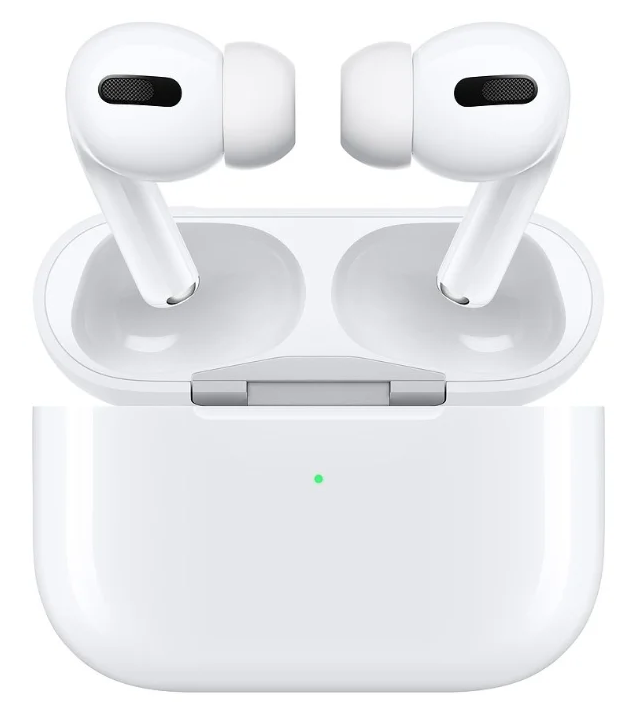
The brand occupying the third line of the review does not need any special introduction.
Apple AirPods Pro are TWS in-ear headphones using the latest Bluetooth 5.0 standard.
The design uses dynamic speakers.
Traditionally, for Apple wireless headsets, A2DP, AVRCP, Hands free, Headset profiles are supported.
Battery life is 4.5 hours.
For subsequent charging, the device is placed in a case with a built-in battery, which is capable of providing charging for a total duration of up to 24 hours.
The connector for charging the case is traditional for Apple products - Lightning.
Replacement ear pads are included.
Advantages:
- High autonomy;
- Fast charging.
Disadvantages:
- Sitting loosely in the ears (Depends on the anatomy of the auricle).
Bose QuietComfort 35 II
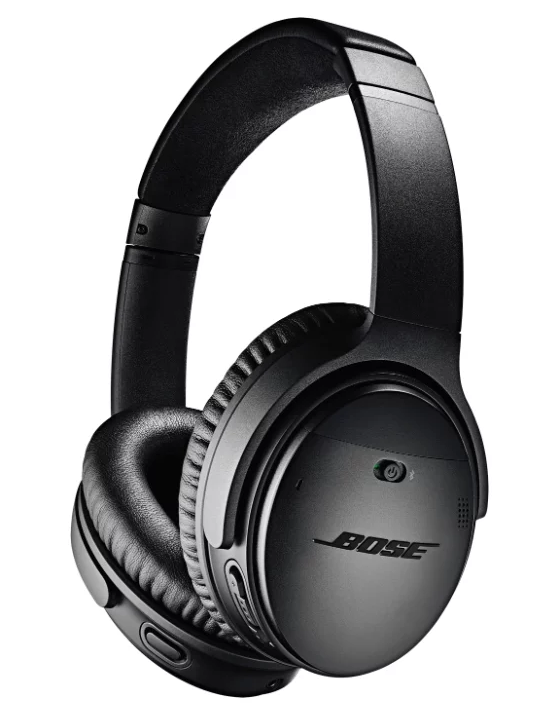
The second line is occupied by full-size overhead stereo telephones from the flagship in audio equipment - Bose.
The active noise canceling technology used is considered the best in its segment.
The type of emitters is dynamic, the headphones are equipped with a detachable audio cable with a mini jack 3.5 mm on both sides. Wire length 1 m.
Battery life is 20 hours.
Touch control, in addition, it is possible to use Google Assistant without the need to pick up a smartphone to search and listen to music, receive information or simply surf the Internet. In addition to the voice assistant, the functions of voice dialing, answering and ending a conversation using the touch keys are available.
Advantages:
- Highly efficient noise reduction system;
- Built-in voice assistant;
- NFC support.
Disadvantages:
- Short detachable wire.
JBL E65BTNC
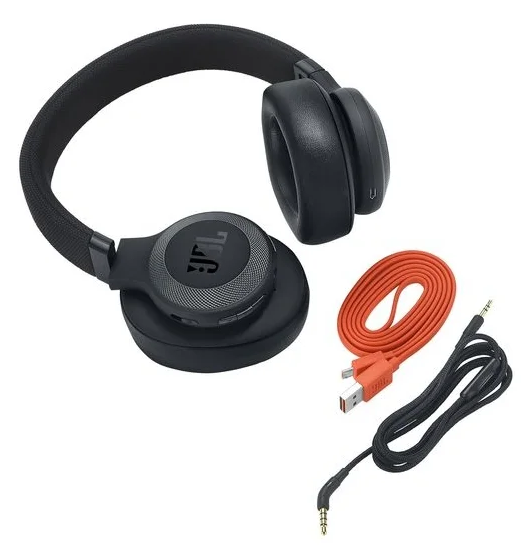
The top line of the rating is occupied by JBL with full-size wireless headphones with active noise canceling. The model is in high demand among buyers due to its well-thought-out ergonomics and due to the excellent balance between price and quality.
The type of emitters is dynamic.
The used Bluetooth standard is 4.1
Frequency Response Range: 20-20000 Hz.
To make the gadget easier to transport, the design is foldable.
In addition to wireless mode, headphones can be connected to the playback device using the supplied cord.
This model uses Li-Pol batteries, which are characterized by more stable output in terms of amperage and durability.
The operating time of the device without recharging is 15 hours.
Advantages:
- Excellent active noise cancellation;
- Tight fit of the headband to the ears;
- Good build quality.
Disadvantages:
- Weight 235 gr. May cause discomfort if worn for a long time.
If you have experience using wireless headphones, or questions, write them in the comments.













Oh yeah!! Wireless headphones decide! Especially when they have good sound, high-quality noise cancellation and hold a charge for a long time. I'm just choosing a model for myself. I think about the Sony wf-1000xm3 and Airpods pro. What would you advise, by the way